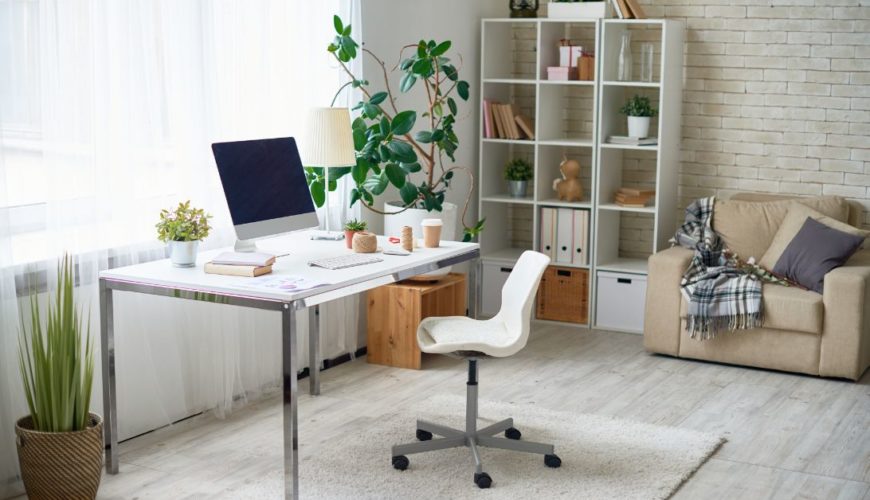More people than ever before are working and studying from home, whether full or part-time. If that includes you then, by now, you’ve probably got a nice set-up — a comfy chair, a decent desk and all the technology you need. It’s easy to forget though, that sitting in that chair all day, moving it about and making innumerable micro adjustments throughout your day can have a big effect on your floor. Your office chair can easily cause indentations in carpet or mark a hard floor surface like laminate.
The solution? A chair mat.
What are they?
Chair mats are a protective layer between your chair and your flooring. If your chair is wheeled, then the mat will allow the wheels to run smoothly and if your chair is on legs, then shuffling and moving the chair about will not damage the floor surface below. There are plenty of different variations of chair mat, so read on to find out which one you need.
Backing
You’ll be presented with a choice of backing type, and this is probably the easiest choice to make. A smooth backing should be used on hard floors (including laminate, wood, lino and vinyl) as this backing will not scratch your flooring. If you have a carpet, rug or other textured flooring, you’ll want a ‘gripper’ backing, which holds onto the carpet pile to prevent the mat from moving about.
Shape
Popular options here include square, rectangular and lipped. If you have a freestanding, standard-type desk, square or rectangular are the options for you. Lipped mats fit nicely underneath l-shaped, corner or wall-adjacent desks.
Material
PVC is the entry-level, budget-friendly option. They can’t be used if you’ve got underfloor heating as extremes of temperature will cause them to crack, and they’re also not great under really heavy weights. On the durability side they perform well, but they are not best in class.
Polycarbonate is the premium choice. It’s quite a bit more expensive, but it will last for absolutely ages. It’s also fire-resistant and can take heavier weights without cracking. Heat-wise, these mats are great — you can use them with underfloor heating or adjacent to a radiator or portable heater with no issues whatsoever.
Rarer options include bamboo, which has the added benefit of being all-natural.

Colour
The vast majority of chair mats are transparent. This allows for a subtle finish and more versatility, as you can easily move the chair mat between rooms without having to account for matching your furnishings. You can find chair mats, however, with colourful designs and prints, which can be a really stylish finish to your office. You’ll pay a bit more for these mats, though.
Size
When you’re picking the size of your chair mat, try and think about how you work throughout the day. If you shuffle and change position a lot, or you get up and down frequently, you’ll want a larger mat that protects more of your flooring. If you stay relatively still, or if your office space has another use (you’re set up in the dining room or living room, for example) then smaller might be better, as it will be less obtrusive and easier to roll up and store should you want to.




